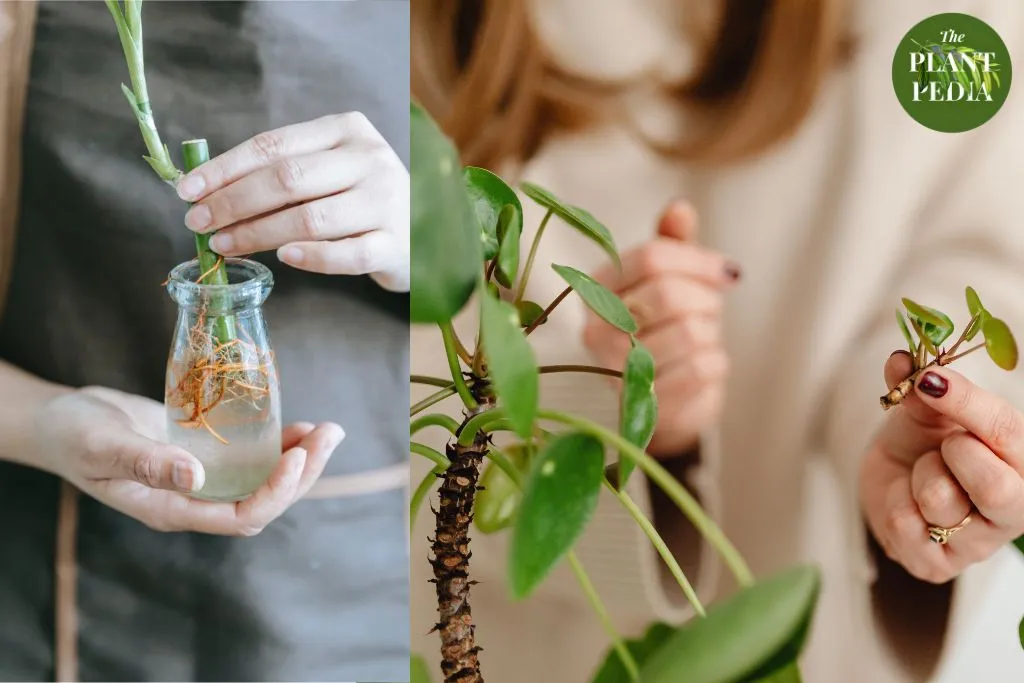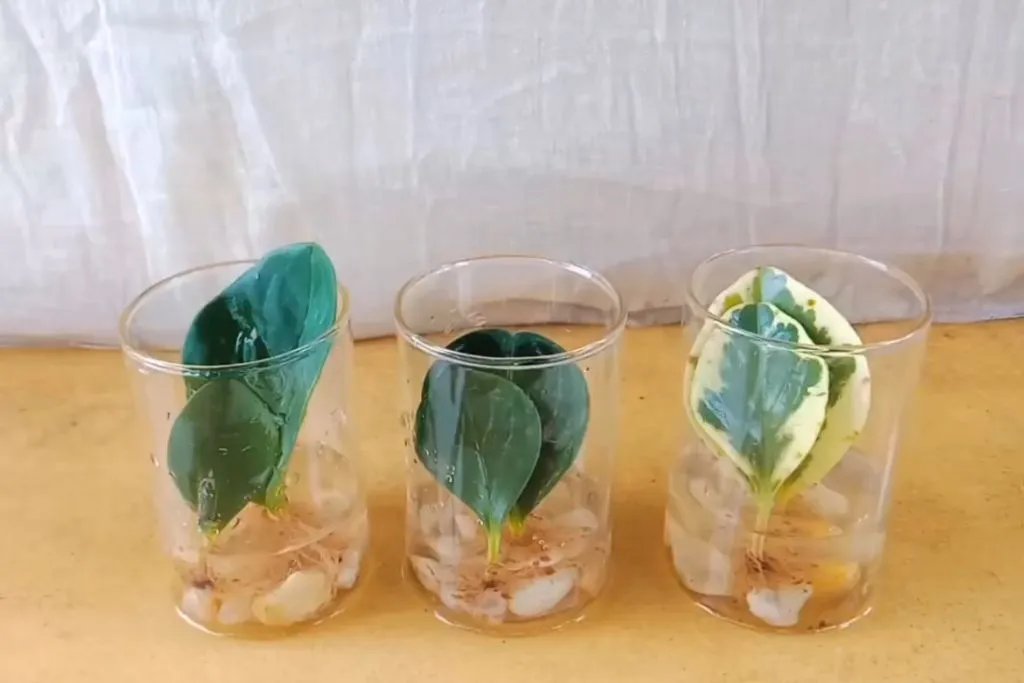Peperomia, with its diverse array of vibrant foliage, has become a beloved addition to indoor gardens and collections.
Its compact size, unique leaf patterns, and relatively low-maintenance requirements make it a popular choice for both beginners and experienced plant enthusiasts.
One of the most rewarding aspects of peperomia ownership is propagation – the process of creating new plants from existing ones.
In this guide, we will delve deep into the art of propagating peperomia from stems, exploring various methods, essential tools, optimal conditions, and troubleshooting tips.
Understanding Peperomia Propagation
Propagation is a natural phenomenon that allows plants to reproduce and expand their presence.
In the case of peperomia, propagation from stem cuttings is an effective method to replicate the plant’s genetic material and grow new individuals.
Stem cuttings are sections of the plant’s stem that, when properly cared for, can develop roots and grow into healthy, thriving plants.
This method preserves the unique traits of the parent plant, ensuring that the new peperomia maintains its distinct characteristics.
Read: Peperomia Propagation: When, How, All The Techniques & Tips.

Step-by-Step Peperomia Propagation from Stem
Essential Tools and Materials
Before embarking on your peperomia propagation journey, gather the necessary tools and materials:
- Healthy Peperomia Plant: Choose a mature, healthy peperomia plant with vibrant foliage and strong stems. This will ensure a higher chance of successful propagation.
- Sharp Sterilized Scissors or Pruners: Clean and sharp tools prevent damage to the plant and reduce the risk of infection.
- Small Containers or Pots: Opt for containers that provide adequate drainage. This helps prevent overwatering and root rot.
- Well-Draining Potting Mix: Use a mix formulated for succulents or prepare your own by combining potting soil, perlite, and coarse sand.
- Rooting Hormone (Optional): While not necessary, using a rooting hormone can expedite the rooting process and increase success rates.
- Misting Spray Bottle: Keep the environment humid to promote root development.
Methods of Propagation
There are several methods to propagate peperomia from stem cuttings. Let’s explore two of the most common techniques: water propagation and soil propagation.
1. Water Propagation:
Water propagation involves placing the stem cuttings in water until they develop roots. Here’s how to do it:
a. Select the Stem Cuttings: Choose healthy stems with at least two leaves attached. Make a clean cut just below a leaf node using sharp, sterilized scissors or pruners.
b. Place in Water: Submerge the cut end of the stem in a container of water, ensuring that the leaf nodes are below the water level.
c. Provide Indirect Light: Place the container in an area with bright, indirect light. Avoid direct sunlight, as it can cause excessive stress to the cuttings.
d. Change Water Regularly: Change the water every few days to prevent stagnation and maintain oxygen levels.
e. Wait for Root Development: Roots typically develop within a few weeks. Once the roots are a couple of inches long, the cutting is ready to be transferred to soil.
2. Soil Propagation:
Soil propagation involves planting the stem cuttings directly into a well-draining potting mix. Here’s how to proceed:
a. Prepare the Stem Cuttings: Select healthy stem cuttings with leaves and make clean cuts just below leaf nodes.
b. Dip in Rooting Hormone (Optional): If using rooting hormone, dip the cut end of the stem into the hormone powder before planting.
c. Plant in Potting Mix: Make a small hole in the potting mix using a pencil or your finger. Insert the cut end of the stem into the hole and gently press the soil around it to secure the cutting.
d. Mist and Cover: Mist the cutting and cover it with a clear plastic bag or a plastic dome to create a mini greenhouse effect. This helps maintain humidity levels.
e. Provide Indirect Light: Place the potted cutting in an area with bright, indirect light. Avoid direct sunlight at this stage.
f. Monitor and Water: Keep the soil slightly moist but not soggy. Check the cutting regularly for signs of new growth.

You can also read: How to Propagate Peperomia from Leaf: Step-by-Step Guide.
Rooting and Growth Factors
Successful peperomia propagation depends on various factors that influence rooting and subsequent growth:
- Humidity: Peperomias thrive in humid environments. Maintaining high humidity levels during propagation helps prevent moisture loss and encourages root development.
- Light: Bright, indirect light is essential for new cuttings. Avoid exposing them to intense sunlight, as it can lead to sunburn.
- Temperature: Peperomias prefer temperatures between 65-75°F (18-24°C). Avoid exposing cuttings to extreme cold or drafts.
- Watering: Keep the soil slightly moist, but not overly wet. Overwatering can lead to root rot, while underwatering can hinder root development.
- Fertilization: Avoid fertilizing newly propagated cuttings for the first few months. Once they have established roots and new growth, you can begin a diluted fertilization regimen.
Troubleshooting Common Issues
Propagation can sometimes encounter challenges. Here’s how to troubleshoot common issues:
- No Root Growth: If your cuttings show no signs of root growth after several weeks, check the water quality (for water propagation) or the soil moisture and temperature (for soil propagation). Adjust these factors as needed.
- Rotting Cuttings: If your cuttings are rotting instead of rooting, it’s likely due to excessive moisture. Ensure that your containers have proper drainage and that you’re not overwatering.
- Wilting or Yellowing Leaves: Wilting or yellowing leaves may indicate underwatering or overexposure to sunlight. Adjust the watering frequency and move the cuttings to a spot with gentler light.
- Drooping Cuttings: If your cuttings are drooping, they may be too exposed to direct light. Move them to a location with more shade or diffuse light.
Read: Baby Rubber Plant Drooping: Understanding & Caring.
Related FAQs:
Can all types of peperomia be propagated from stem cuttings?
Not all types of peperomia can be propagated successfully from stem cuttings. Varieties with thicker leaves, like Peperomia obtusifolia, generally root well from stem cuttings.
However, varieties with succulent-like leaves, such as Peperomia graveolens, might have different propagation requirements.
Is it necessary to use rooting hormone for peperomia propagation?
Using rooting hormone is optional but can increase the chances of successful propagation. It encourages the development of roots and can be especially useful if you’re dealing with challenging-to-root varieties.
When is the best time to propagate peperomia from stem cuttings?
Spring and summer are the ideal seasons for peperomia propagation. During these months, the plant’s natural growth is at its peak, and the warm temperatures promote quicker root development.
Can I propagate peperomia in water and then transfer to soil?
Yes, you can start by propagating peperomia in water and then transfer the cuttings to soil once they have developed sufficient roots.
This can help reduce the risk of transplant shock and improve overall success rates.
How long does it take for peperomia stem cuttings to root?
The rooting time can vary depending on factors such as temperature, humidity, and the specific peperomia variety. On average, root development can take anywhere from a few weeks to a couple of months.
Can I propagate peperomia in a terrarium?
Yes, propagating peperomia in a terrarium can create an ideal environment for maintaining high humidity levels, which is beneficial for root development.
Ensure that the terrarium is well-ventilated to prevent excessive moisture buildup.
What should I do if my peperomia stem cuttings are rotting?
If you notice rotting cuttings, it’s likely due to excessive moisture. Remove the affected cuttings and adjust your propagation environment to provide better drainage and airflow.
Can I propagate peperomia from just a single leaf cutting?
While it’s possible to propagate peperomia from a single leaf cutting, the success rate can be lower compared to using stem cuttings with multiple leaves.
The stem contains more nodes where roots can develop, increasing the chances of success.
Should I provide bottom heat during peperomia propagation?
Bottom heat can promote faster root development, especially in cooler climates. Using a heat mat or placing your propagation containers near a warm spot can aid in creating an optimal rooting environment.
How often should I mist the peperomia stem cuttings?
Mist the cuttings regularly, approximately once or twice a day, to maintain high humidity levels. However, be cautious not to oversaturate the environment, as this can lead to fungal issues.
Can I use water from my aquarium to propagate peperomia in water?
It’s not recommended to use aquarium water for propagating peperomia. The water might contain substances that can harm the plant or hinder root development. Use clean, non-chlorinated water for the best results.
How do I know when my propagated peperomia is ready to be transferred to a larger pot?
Once the newly propagated peperomia has developed a healthy root system and is showing new growth, it’s a good indication that it’s ready to be transplanted into a slightly larger pot.
Conclusion
The journey of propagating peperomia from stem cuttings is a rewarding endeavor that allows you to witness the magic of plant growth up close.
By understanding the methods, tools, and optimal conditions required for successful propagation, you can expand your peperomia collection and share the beauty of these unique plants with others.
Remember, each propagation attempt is a learning experience, and with patience and care, you’ll become an adept peperomia propagator, nurturing new life and watching it flourish.
